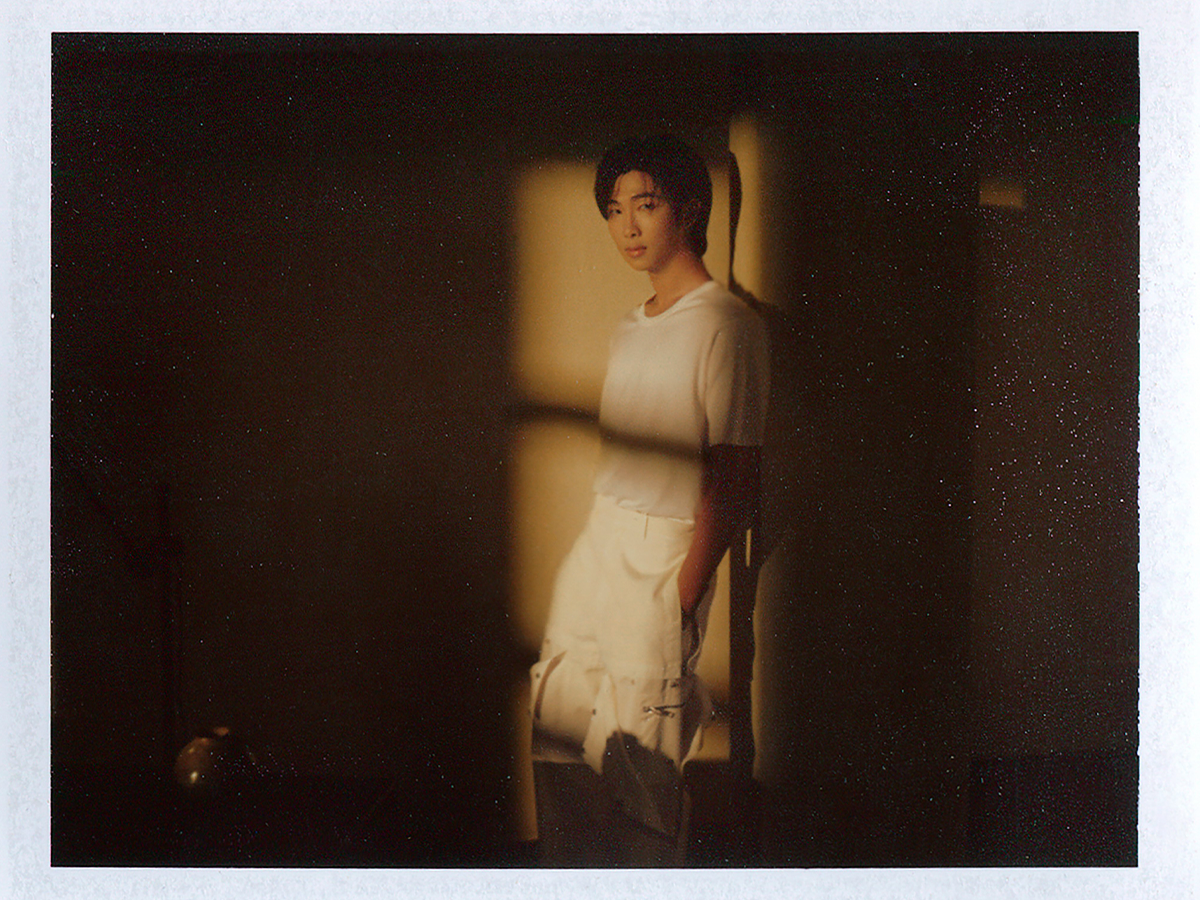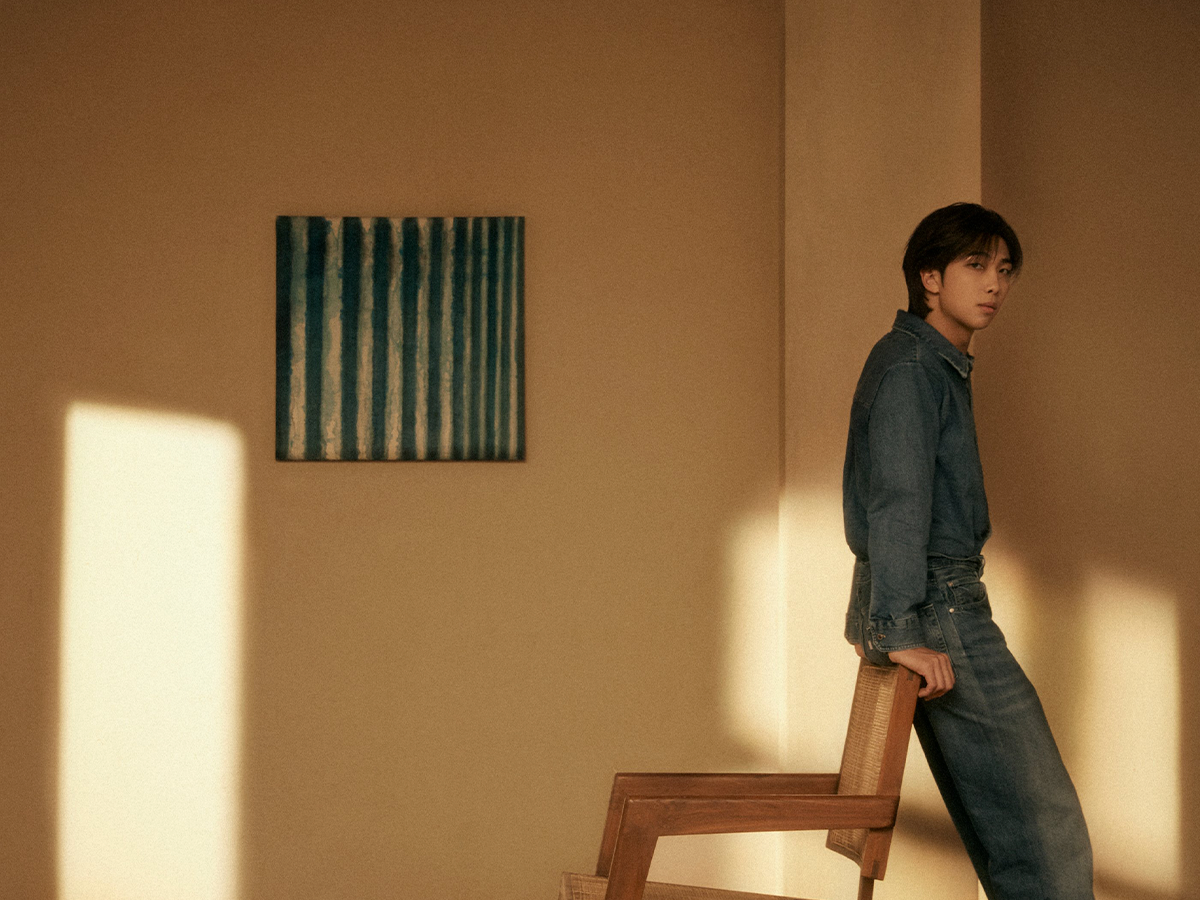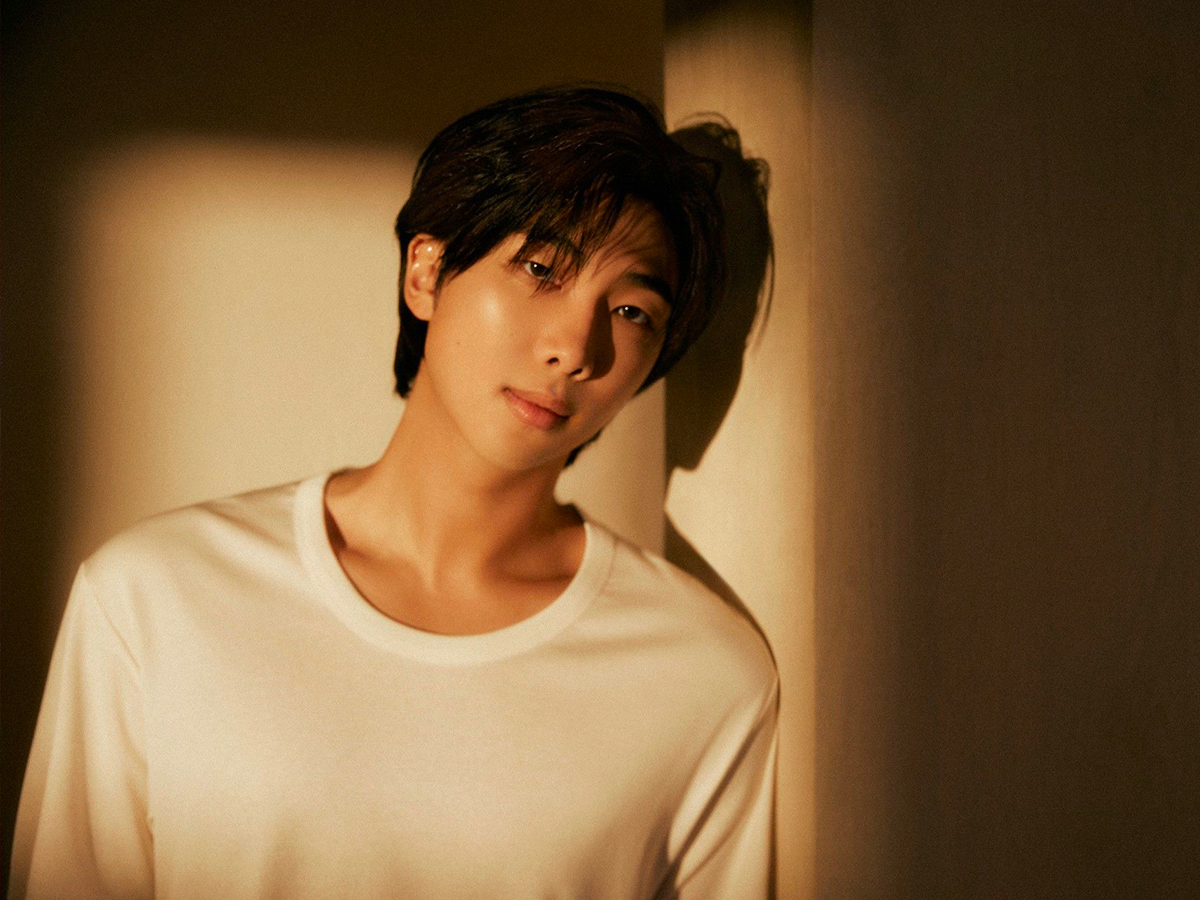
RM’s new album Right Place, Wrong Person is like an architecture design written in poetry. It doesn't seem like a coincidence that the music videos for the pre-released track “Come back to me” and the title track “LOST!” both feature the theme of spatial movement. In “Come back to me,” RM moves from room to room on the same floor, while in “LOST!” he travels through levels. In this horizontal and vertical movement, RM searches for his “Right Place.” In the music video for “LOST!”, he climbs the bodies of other “RMs” to a studio where a TV show is aired. In real life, RM is a favorite of TV show hosts. As he raps in “Lost!”, the lyrics go “I snap into it, suddenly I’m in an empty street. Time flies like an arrow, the 14-year-old kid is now 30.” In the music video for “LOST!”, RM is forced to walk looking narrowly ahead or climb upwards. There was a time when RM was a middle school rapper hoping to perform at Rolling Hall, a small club in South Korea, a trainee dreaming of debut, and an idol desperate for success. Sixteen years later, as he stands up front and center as a K-pop artist, he looks to the side. In the music video for “Come back to me,” he moves from room to room in a building, each time finding himself in a different situation with a different person. In one room, two people who seem to be his wife and child are washing up, and in another room, a woman who appears to be his lover is mad at him. While these could be RM’s past within the music video, assuming the lyrics “세수할 시간도 아까워 (I don’t even have time to wash my face.)” encapsulate the way RM has been living his life as a member of BTS. They could also be possible paths he could have taken in another life. Am I in the wrong place in my life right now? No. “Right People, Wrong Place.” Like the first track that reversed the title of the album, it might be the place that’s wrong. “Wrong people in wrong place, right people in right place, right people in wrong place.” Amid the various possibilities of life, where do I stand? RM creates spaces in his album and moves through them to find his place. In “Right People, Wrong Place,” as RM recites similarly repeated but slightly different sentences, the various sounds gradually overlap his voice and create a space. Instead of a specific beat or melody driving the song, multiple beats are placed around RM’s voice, creating a backdrop and demonstrating the sound design of the entire album. “Domodachi (feat. Little Simz),” which begins with just a saxophone, is initially reminiscent of a deserted space at night. But soon enough, a rage of sounds swirls around, creating a unique atmosphere that you can’t tell if it’s real or fantasy. RM’s rap is at the turning point of change. As RM raps in a dry voice and gradually speeds up his rhymes, the background sound changes drastically, as if a storm has hit. When RM says “Get high, get fire” in a calm voice, as if he were reciting a poem, the sound elaborates on the subtle changes in his voice and the content of the lyrics with a sonic mise-en-scène, getting louder and louder at the same time.

“Nuts” and “out of love” go together like one song. “Groin” starts with a chorus that abruptly ends and turns jazzy with RM’s old-school rap. The lines between song and song are blurred, and within a song, it’s almost as if you’re listening to a mix of songs. “Groin” goes through a drastic change in sound as RM raps, sings, and then sings the hook again in the form of a chorus and a sing-along. In this album, RM moves from room to room made of music, just like in the music video for “Come back to me.” But the unit of division is not the song. It’s RM’s voice, and the lyrics are what drives the song. The chorus to “Domodachi (feat. Little Simz),” with the line, “みんな友達ここで踊りましょう (Everyone, we’re friends, let’s dance here),” leaves a strong impression, and it’s not just because it switches up the mood of the song. The moment when the anxious and confused mood that gradually built up in the previous three songs gives way to a powerful and grandiose chorus in “みんな友達ここで踊りましょう” is a turning point not only for “Domodachi (feat. Little Simz),” but for the album as a whole. Just as a movie can present a consistent mood and then abruptly shift from one scene to another, Right Place, Wrong Person is not a song-by-song experience, but rather a series of defining moments in the flow of the album as a whole. In “Right People, Wrong Place,” RM sings a repetitive line with different combinations of “Right” and “Wrong” and “Person” and “Place.” In “Nuts,” he sings with a line that uses “right place,” like “I could make this right place for you.” The “fire” in “Feelin’ high on a forest fire” leads to “Get high, get fire” in “Domodachi (feat. Little Simz).” The story of each song has a larger flow throughout the album, with connections to other songs. The ninth track, “Around the world in a day (feat. Moses Sumney),” ends with the biggest chorus on the entire album, and the next song is titled “ㅠㅠ (Credit Roll).” Just as the end credits roll at the end of a movie, Right Place, Wrong Person gives each song a role to play in the overall flow of the piece. If each song on Right Place, Wrong Person is a room designed by RM’s poetry, then the entirety of Right Place, Wrong Person is a movie of RM’s journey through those rooms, unraveling his memories, feelings, and thoughts through his voice. “INSIDE NAMJOON'S BRAIN,” the name tag that appears at the beginning of the “LOST!” music video, sums up the album’s storyline. It’s the process of wandering around his poetic head, which no one can organize, in the form of a building made up of various rooms. So if you were to categorize this album, which is hard to define in terms of genre, it’s not hip-hop, progressive, or psychedelic, but rather a (fictional) soundtrack.

RM understands K-pop and hip-hop, the Hongdae indie scene, and pop trends from around the world. At the same time, he knows Oh Hyuk, Little Simz, and Moses Sumney. If combinations of people and places can be categorized as “Right” or “Wrong,” then RM is someone who can be both “Right” and “Wrong” everywhere. The music video for “Come back to me” begins with a depressed-looking RM alone at a party where everyone is having fun. Someone who can be everywhere and yet belong nowhere. How do you describe someone who was born and raised in Korea but speaks English and works all over the world, who loves Whanki Kim and Epik High of Korea but also interacts with artists from all over the world? “Domodachi (feat. Little Simz)” features RM’s English verse, a Japanese chorus, and an English rap by the British rapper Little Simz. The moment when Little Simz raps “내 선은 넘지 못해 (You can't cross my line.)” in Korean symbolizes the stylization of Right Place, Wrong Person. It may sound strange if you speak Korean. It may also be strange for those who speak other languages, but the auditory freshness of the pronunciation and tone of voice, not the meaning, will strike first. In the music video for “LOST!”, the TV show hosts convey completely different nuances in English and Korean. In Korean, they speak in a cheerful and friendly manner, while in English, they sound cold and detached. The same meaning creates different feelings in different languages, and unintelligible language can sometimes be interpreted in different nuances through non-verbal elements. A conflict occurs when someone else enters your place, or when you enter a place where someone else is. Korean and English are intertwined to create different nuances, and each song is connected when listened to as a whole, with each song repeating around a specific beat and melody, choosing to be ever-changing rather than memorable as if the lyrics are telling a story. Right Place, Wrong Person follows RM’s musings on himself, as he doesn’t seem to have a psychological home exactly anywhere. He expresses love, friendship, and the journey he’s been on through the cultures he has lived in and the people he has known. He tells the most personal stories in a personalized way. It’s unlikely that anyone other than RM will be able to fully comprehend the album, which seems to combine all of these different elements into a “place” opposite of the standardized forms of popular music today. But it’s clear that for everyone, a mix of partial familiarity and a lot of unfamiliarity creates new impressions. Director Lee Sung Jin, who directed the music video for “Come back to me,” produced, directed, and wrote the Netflix miniseries “Beef.” The film follows the lives of Korean-Americans who are bilingual in Korean and English, showing how neither Koreans nor Americans can fully understand their lives. It’s about people who belong to both sides of the fence and neither side of the fence at the same time finding a way to express themselves. With the world’s languages and cultures intermingling over the internet, it’s a way for people who thought they were the “wrong person” in the “right place” to become the “right person” in the “right place.” With Right Place, Wrong Person, RM gathers people who have created their own places, and through them, creates a form of expression out of his life. In the process, RM captures the most personal and cultural trends of the world right now, through a personal style that can be understood even when it doesn’t make sense, or only when it doesn’t make sense. In other words, Right Place, Wrong Person has become art that is so personal that it can leave a lasting impression anywhere in the world. RM uses his personal identity as an artist who was born and raised in Korea as a starting point to give the world something that’s both extremely personal and simultaneously in line with global trends.
In his last solo album Indigo, RM brought together the tastes and people that have influenced him from the past to the present. Right Place, Wrong Person follows that young man as he creates his own language of music, visuals, and literature with people who are now creating their own places in the world, different from his own. By looking vertically across time and horizontally across space, or scene, RM began to create a place for himself instead of judging himself as “right” or “wrong.” The important thing about “Come back to me” is not the desire to “come back” but “to me.” The person who went to countless exhibitions and spiritual journeys to find the “Right Place” has finally turned the center of his consciousness to “me.”

- The musicians on RM’s Indigo: Part two2022.11.26

- The musicians on RM’s Indigo: Part one2022.11.25

- RM paves the way2022.12.15
